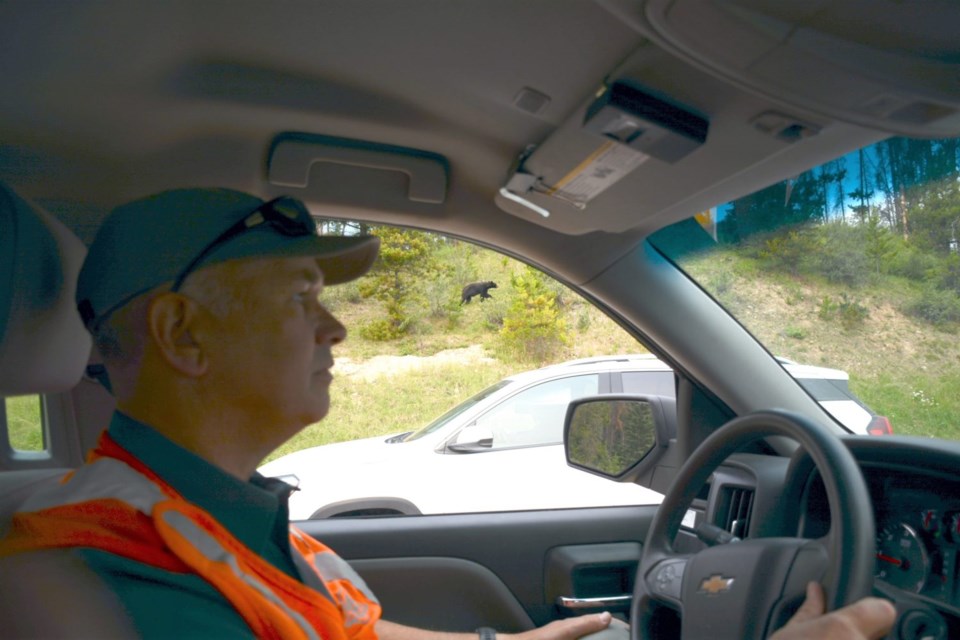Scott Hayes | [email protected]
Local Journalism Initiative Reporter
Driving up and down Highway 93 on his wildlife rounds last Thursday, human-wildlife conflict and co-existence specialist James McCormick was on his way back north near the southern end of Wapiti Campground.
From a short distance, he could see one vehicle pulled off to the side of the road.
That was the first indication of wildlife in proximity. Getting closer, another vehicle was visible in front of the first: the start of a bear jam.
A dark shadow was off to the side shuffling around in the bushes along the gentle slope down toward the southern edge of Wapiti Campground. That black bear was shuffling upward toward the road, as oncoming traffic started to slow down and stop.
Foreseeing trouble, McCormick waited until the bear was behind the rear vehicle in a position that was totally obstructed from the view of oncoming traffic that was slowly passing by.
Before an accident could occur, he moved his Parks Canada truck so that it blocked lanes in both directions, effectively stopping all traffic so that the creature could safely traverse the highway.
Just another day trying to keep people and the animals healthy and happy in a national park.
McCormick describes his work as maintaining a delicate balance of keeping wildlife wild while striving to offer people as much opportunity to view them as possible.
“It’s very tricky,” he said. “Sometimes it depends on the number of calls. We might want to stay and manage a wildlife viewing opportunity, but we have three other calls that have some urgency to them, and so we might need to clear up that wildlife jam, just so we can respond to something else.”
That “something else” might involve an animal that had become too comfortable around people, someone getting too close to the animal or even someone offering food to it.
“Sometimes people see an animal feeding on the side of the road and figure it's hungry, and they want to throw their food out, which is the worst possible thing you can do,” McCormick said.
“That animal gets that food, now it starts associating people with a food reward and it starts looking for that food reward. That's just going to lead to potentially aggressive behaviour, or it's going to try and break into things and we just can't have that happen.”
Every year, Parks Canada gets multiple reports of people feeding animals, which is illegal under the Canada National Parks Act, as is enticing or disturbing wildlife. Violators could be fined up to $25,000.
Beyond that, it could very likely mean the destruction of the animal.
McCormick wishes that everyone would know and keep a respectful distance from the wildlife. That’s how coexistence works.
In his view, bears are perhaps the better behaved species in the park. Wild though they may be, at least their behaviour is more predictable than people’s behaviours are.
If he and his teammates can achieve and maintain that delicate balance then they – and the rest of us – also get rewarded with those wondrous moments of seeing a spectacular animal like a grizzly bear in its natural habitat. McCormick lives for those days.
“I’m pretty excited to be able to share that moment with them. Our goal is to work for that thing, and to do it in a way that they feel that they can see it in a respectful way, and that they're not impacting that animal negatively. I think that makes a world of difference. What our team is shooting for is to do that when the animal is in a good place and people get a chance to see that whenever possible.”
All wildlife encounters must be reported to a Parks Canada staff member or by phoning Jasper Dispatch at 780-852-6155.




